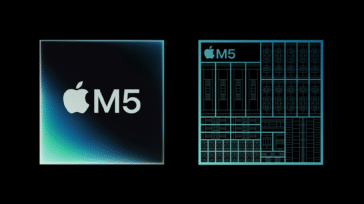
Last week’s update to Mac OS X 10.10.3 Yosemite featured a number of new features, bug fixes, and performance enhancements. For example, the update brought the new Photos app to all users, a precursor to the eventual elimination of both iPhoto and Aperture from the Apple software stable. It also resolved some longstanding 10.10 issues with Wi-Fi networks, Bluetooth connectivity, and Safari, and also added over 300 new Emoji characters. Two of the less unsung updates will have a positive effect on the performance of some SSD-equipped Macs as well as those that are connected to 4K (and higher resolution) displays.
The first of these two updates should be useful with anyone who uses PCI Express SSDs, including those built into newer Mac models. Apple has built in new support for the NVM Express SSD Interface (also known as NVMe) in 10.10.3. It’s an optimized PCIe-based protocol that should provide faster SSD performance than is possible with current AHCI (Advanced Host Controller Interface) implementations.
NVMe was designed by an industry consortium and is meant to replace AHCI technology, which was designed to optimize performance in traditional spinning hard disk drives. NVMe, on the other hand, is optimized for lower latency operations provided by solid state media, reducing latency by a full 50 percent. NVMe is designed to scale over the next ten years, giving it a lifecycle similar to that of AHCI, which has been around since 2004. Apple uses the PCIe transport protocol on all Macs built since 2011, so the company can quickly roll out support for NVMe across the full line of desktop and laptop machines.
What’s the first Mac to benefit from NVMe speed and power efficiency? The new 12-inch MacBook with Retina Display. That little machine is expected to start arriving in the hands of Mac users this week after an official introduction last Friday and will also take advantage of another 10.10.3 feature: enhanced 4K support.
Apple used to support only certain Multi-Stream Transport (MST) displays at a refresh rate of 60Hz, but now says that “most single-stream 4K (3840 x 2160) displays” are supported at 60 Hz under OS X 10.10.3. What does this mean for Mac owners? The ability to purchase and use less expensive 4K displays that don’t include DisplayPort’s MST feature.
The Macs that will support the Single-Stream (SST) displays include:
- MacBook Pro (Retina, 13-inch, Early 2015)
- MacBook Pro (Retina, 15-inch, Mid 2014)
- Mac Pro (Late 2013)
- iMac (27-inch, Late 2013 and later)
- Mac mini (Late 2014)
- MacBook Air (Early 2015)
- MacBook (Retina, 12-inch, Early 2015)
The new MacBook will support displays at 3840 x 2160 at 30 Hz or 4096 x 2160 at 24 Hz over HDMI. Of course, since the new device only has a single USB-C port, owners will need the appropriate adapter to connect to the higher resolution monitors while still providing power to the laptop.










Welcome to the party Apple. NVME has been supported by every other major OS for awhile now, glad you could finally catch up.
Also:
Apple introduces 3D titles in Final Cut Pro 10.2, out now
http://www.macworld.com/article/2909347/apple-introduces-3d-titles-in-final-cut-pro-10-2-out-now.html
Where is the Apple 3D display? Perhaps OWC could make it!